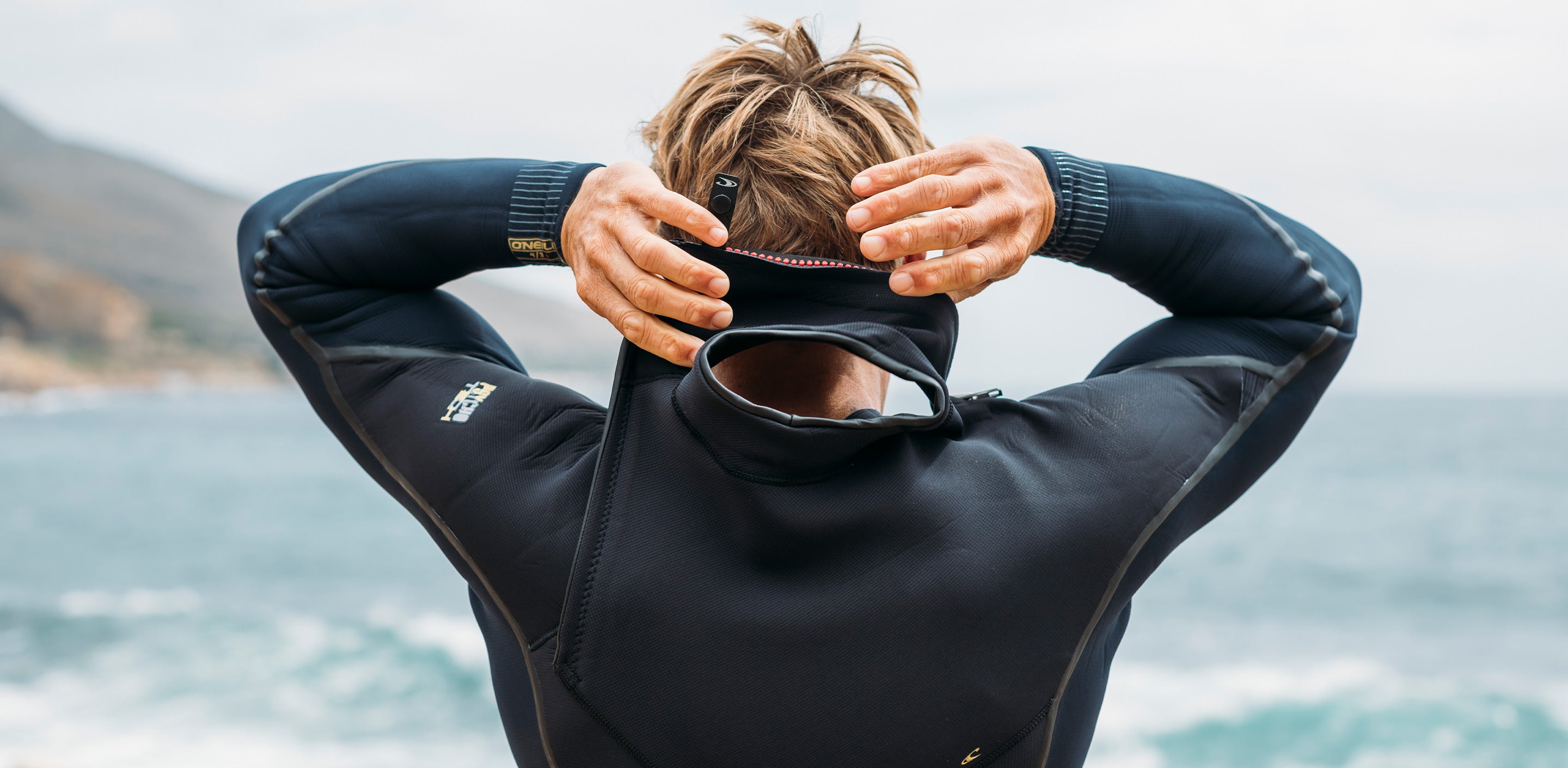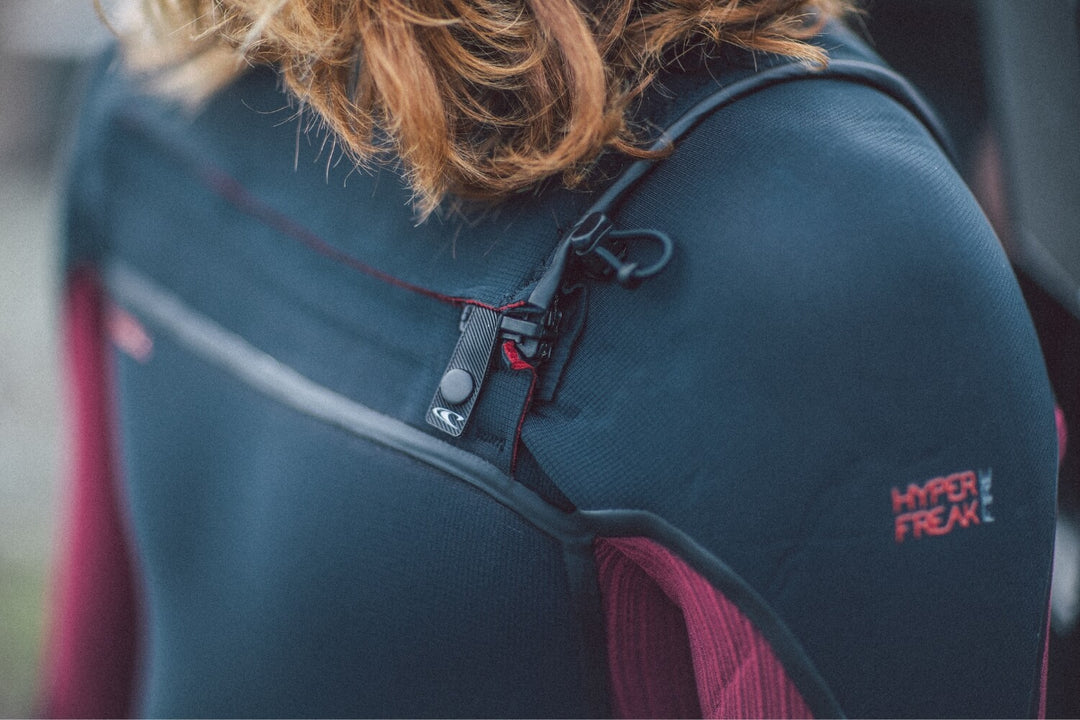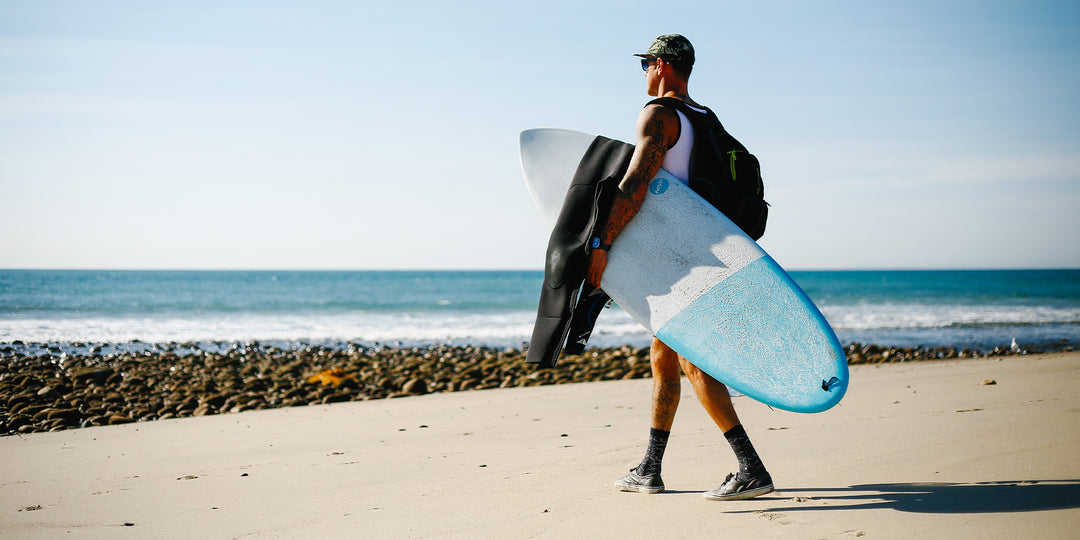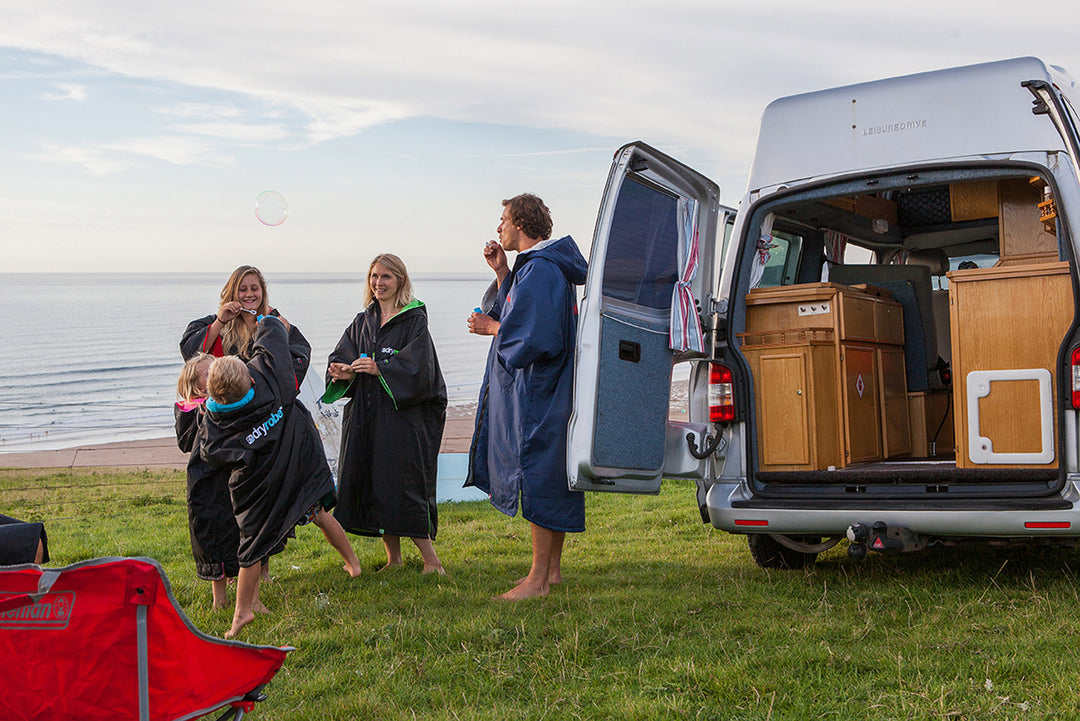In a world where a huge percentage of wetsuit sales are now happening online and you may not have a surf shop with experienced staff near you, here is the next best thing. This is the advice that we would give you if you were in the shop with us, so you can choose the perfect fitting wetsuit in the comfort of your home.
A little explanation before we get into it, so that everything below makes sense.
How does a wetsuit work?
Wetsuits come in lots of different styles from shorties for the summer time to hooded wetsuits for deep winter surfing. All of them work the same way offering varying levels of thermal protection.
All wetsuits will let in some water, it’s in the name, but ideally this will be kept to a minimum as lots of water in your wetsuit will make you cold.
When a good quality wetsuit fits you well, it will trap a thin layer of water around you. Your body heat will be able to warm up that layer of water and the less water is in the wetsuit, the easier it is to do that.
Pro-Tip: Contrary to popular belief, it’s not the layer of water that keeps you warm. It’s when there’s only very little water inside the wetsuit and when that is held close to your body, that your body heat can offset the cooling effect from the water and the neoprene of your wetsuit is what keeps you warm.
It’s fairly obvious that a thin 2mm shorty won’t do the same thing as a 5mm full length wetsuit because of the thinner neoprene and the reduced area of skin that it covers. It’s also clear that if instead of a thin layer of water you have big pools of water inside the wetsuit, your body temperature won’t be able to heat those up and the water inside your wetsuit will make you cold.
Other factors will determine how warm your wetsuit is like the quality of the neoprene or alternative materials like Yulex as well as the seams and other features like lining, taping and style of zip closure. If you want to dive deeper into this subject, go to our post about how to choose the right wetsuit for you.
Find the perfect wetsuit fit for you
First question - are you an adult or are you making this decision for a child? We will first talk about how a wetsuit should fit for an adult, you’ll find the info for kids further down.
Adult Wetsuit Fit Guide
“Don’t just buy your clothing size”
Ideally you bought the wetsuit after reading the size chart for the brand you bought. We find that a lot of people will pick their size going by other clothing items they wear, say T-shirt or dress size. This may work if you are lucky, but wetsuit sizing can differ greatly from other clothes and also from brand to brand, so we always recommend to read the size chart and pick the size closest to your measurements. We would prioritise weight and chest width to start gauging which size to buy.
How should a wetsuit fit for surf sports, kayaking or paddle boarding?
The short answer is - tight. If you have never worn a wetsuit then you will most likely find it very tight to start with and in our experience many first timers think the wetsuit they are trying on is too small, even though it is the perfect fit.
Because a neoprene wetsuit is meant to fit you like a second skin, you might need to make some adjustments after initially putting it on, so that the wetsuit sits comfortably on your body and gives you the freedom of movement that it should.
You want your wetsuit to be tight everywhere, but it is most important that your wetsuit fits snuggly over the lower back and core. Big gaps in the back or over your chest will fill up with water and make you cold. We are all shaped differently though so sometimes you do have to compromise and allow for a little bit of extra material in places. Some room under the arms, for example is not uncommon and while you still want that to be as tight as possible you can live with a little excess if everything else fits well.
The thicker your wetsuit, the tighter it will feel, that is where some of the high end neoprenes found in top of the line wetsuits really come into their own. They offer a lot of flexibility even though the thickness of neoprene has gone up.
If you are wearing a wetsuit with a back zip and can’t zip it up because it is stretched too far apart at the back, even after making the adjustments below, then it is probably too small. Some people struggle to reach the zip at first, but get used to it after a while.
Pro-Tip: Don’t pull the zip with both hands at the same time. When doing that your shoulders will bulge out, widening the gap between the two sides of the wetsuit on the back. Instead pull up with one hand and use the other hand to pinch the wetsuit just under the zip in the area of your lower back. That way your shoulders are smaller and it is easier to zip up the wetsuit. This also reduces the risk of the neoprene bunching and being caught and damaged by the zipper.
A few important pointers
The wristband of your wetsuit should be roughly where your watch would be, you don’t need to pull it over your wrists onto the hands. Any excess material here needs to be pulled up into the shoulder to allow maximum freedom of movement for your arms.
The wristband of your wetsuit should be roughly where your watch would be, you don’t need to pull it over your wrists onto the hands. Any excess material here needs to be pulled up into the shoulder to allow maximum freedom of movement for your arms.
The wetsuit legs should finish just above the ankle similar to the arms, any excess material needs to be pulled up all the way over the hips and into the upper body. Make sure the knee pads are on the knees, not the shin.
Small adjustments on the arms and legs can make a big difference to how the wetsuit sits and feels in the upper body.
Independent of whether you are wearing a chest zip or back zip wetsuit, the neck should be tight. You might find it too tight on dry land, but once you are in the water you will be grateful for a good neck seal to stop water from gushing in.
Check that you have unrestricted movement, make paddle movements, do some squats, make sure the wetsuit allows you to move freely (but isn’t loose!).
How should a swimming wetsuit fit?
If you are investing in an open water swimming or triathlon wetsuit, make sure you get one that fits you snugly. They tend to be extremely stretchy so you can go for a very tight fit and that will translate to very little water ingress when you are swimming.
Summary for Adults:
- Buy a wetsuit going by the brand’s size chart
- Take your time putting it on, making sure that first the lower body is put on correctly, then the upper body
- Pull any excess material into the shoulders and chest to stop tugging in the neck
- Then zip it up or close the neck piece if you are wearing a chest zip wetsuit
- Make sure your wetsuit fits well, allowing freedom of movement, but is not loose and doesn’t have air pockets around the lower back and core.
Kids Wetsuit Fitting Guide
In an ideal world your kids would also wear a very tight fitting wetsuit to keep them as warm as possible. If your grom is hitting the beach every day and surfing in winter, then a well fitting suit is essential.
The same applies if your child feels the cold. You will likely put them off watersports if you get them a wetsuit that doesn’t fit well and keep them warm. That’s particularly important in countries like Ireland where the water temperature rarely rises above 16 degrees and most of the year is well below that.
However, for casual summer use, a compromise could be made. So you may look for a wetsuit that will last you a while and not be outgrown within one season.
Areas to pay attention to are the core and lower back, you want the wetsuit to be tight here. Arms and legs that are too long can be rolled up, or equally if they are too short, that is less of an issue than a loose fit around the upper body.
As a general rule we would say to our customers that it is better if a wetsuit is slightly too short than too wide. So it is important that you don’t just go by your kids height when picking their size, look at their weight and chest measurements too.
In general, the thicker the wetsuit you buy, the more forgiving it will be of being slightly too big. For example, if you buy a summer shorty that is too big and lets in water at the legs and arms, it’s more likely not going to give much thermal protection at all. Whereas a 5/4 or 5/3 full length wetsuit that is a bit too big will still keep you warmer simply due to the thicker material and more of your kids’ body being covered.
Summary for Kids:
- Buy a wetsuit going by the brand’s size chart
- If you are buying for a child who is using the wetsuit during the colder months or if your child feels the cold, go for as good a fit as possible to ensure they are kept warm.
- Slightly too short is better than too wide
- If you are buying for casual summer use and would like the wetsuit to last longer it’s worth buying a thicker wetsuit that will work better even if it’s not a perfect fit whereas an ill fitting shorty is not a good investment even though it may be a cheaper purchase.
One last thing
Wetsuits are made from elastic material so they will never be as tight as they are when you try them on first. They stretch out with use, from being pulled on and off and being worn frequently. That’s why you need to start with as tight a fit as possible. The wetsuit will stretch and map to your body shape.
Conclusion
If you can’t buy in-store with expert advice, pay close attention to the brands’ size chart to have the best chance at ordering the right wetsuit first time round. Fit is most important around the core and lower back as an ill-fitting wetsuit won’t provide the desired thermal protection.
Adults should go for as tight a wetsuit as possible, for children you might consider a little bit of room for growth, but not too much so the wetsuit still works.





